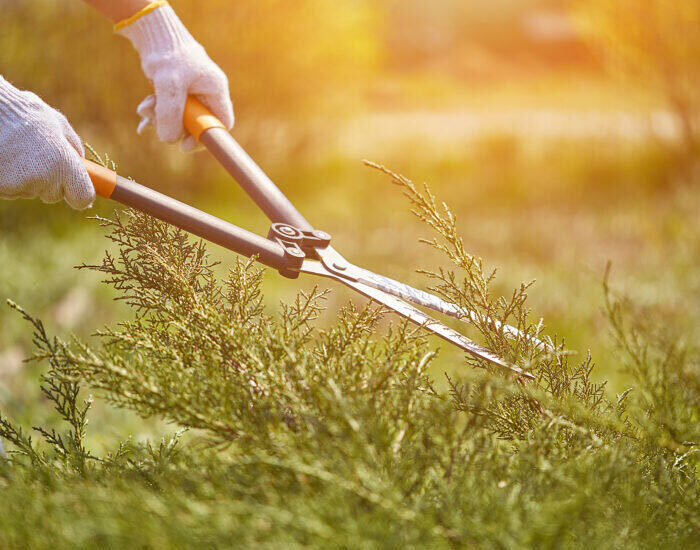August 20th, 2020
Pruning Dos and Don’ts

Oftentimes one of the best ways to keep plants healthy and to encourage new growth is through pruning. Pruning is the targeted removal of certain parts of a plant, such as branches, buds or roots. These parts are usually diseased, damaged, dead, or otherwise removed for purposes such as:
- Maintaining plant health
- Training a plant to create a perfect shape
- Improving the quality of foliage and stems
- Removing parts that restrict growth
If done correctly, pruning yields abundant foliage, flowers and fruit. Inversely, incorrect pruning results in damaged plants. Because of this, it is very important to understand your goals while pruning. Knowing exactly what you are expecting to get out of this technique will allow a plant to thrive for years with minimal upkeep.
For the most part, pruning always stimulates growth. The rigor of your pruning, however, depends on exactly what you want to accomplish. Severe pruning will result in vigorous growth for a plant while light pruning will stimulate slower growth. Because of this, it is important to carefully plan out how and where you will be cutting the plant.
There is no “one way” to prune plants. While pruning effectively may appear difficult, it all comes down to learning the correct methods for each type and variety of plant. To successfully master this technique, it is important to know each and every one of your plants and what it needs to thrive.
Flowering Trees, Shrubs, and Vines
Although you can generally prune flowering plants at any time, pruning soon after your plants bloom will produce the best floral display. When you are pruning, target unwanted branches and suckers at the base of the plant. Additionally, don’t be afraid to trim and shape the plant. These techniques will get the plant prepared to flourish during its next bloom.
Perennials
While pruning perennials can be a labor-intensive task, regular pruning and deadheading throughout the growing cycle can create a perfectly polished perennial bed. Throughout the entire season, it is okay to trim non-blooming growth. By cutting off and digging up their unruly parts, you have the opportunity to train perennials in their early years.
Evergreens
Evergreen trees are oftentimes left alone, and that is usually a good idea. Unless a trim is necessary, evergreens don’t need to be pruned as it can cause stress or distort the tree. Be mindful that these trees become large and take up a lot of space. When planting evergreens, find a place in your garden that allows for the trees to grow without disrupting other plants.
While every plant is specific, annual pruning is almost always a good idea. Don’t be afraid to cut away at your plant’s old branches between late winter and early spring to encourage new growth. However you choose to do so, make sure pruning happens before new buds come in.
Mastering the art of pruning takes time and experience. Because it is so unique to your specific plants, this technique is learned as you acquire gardening experience. In every situation, start out slow but don’t be afraid to help your plants grow.




